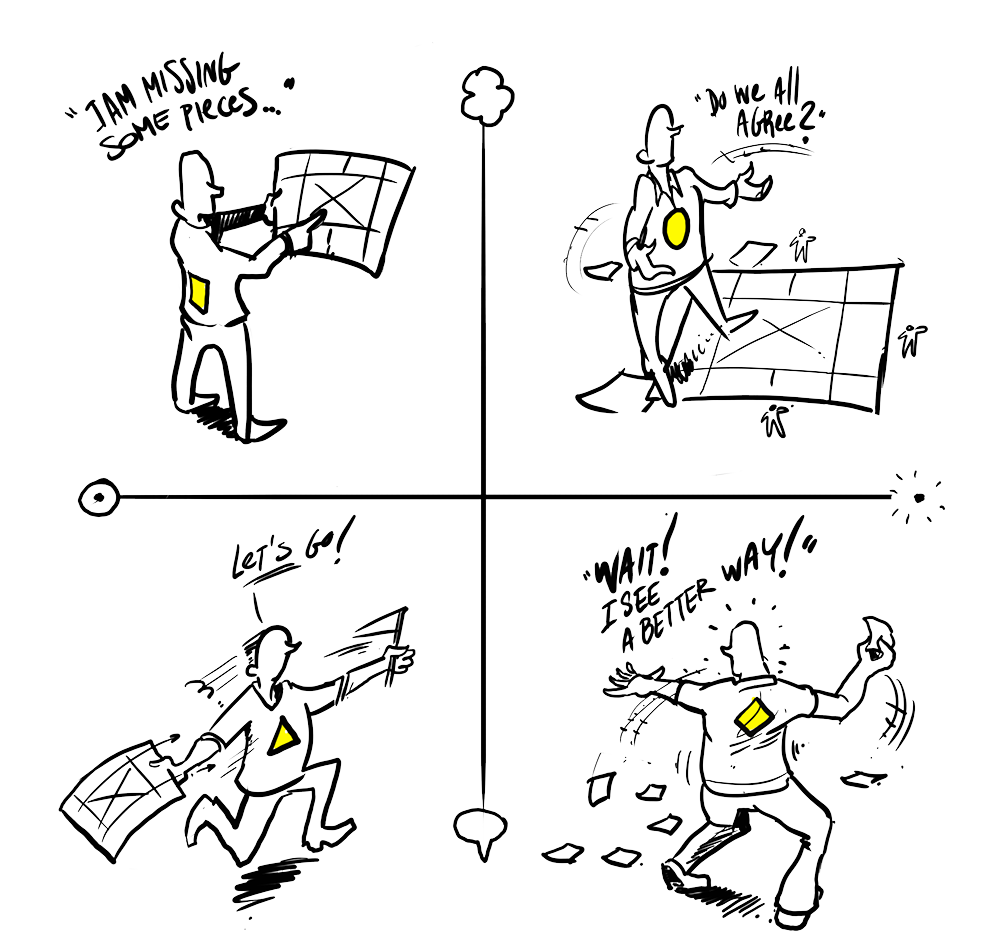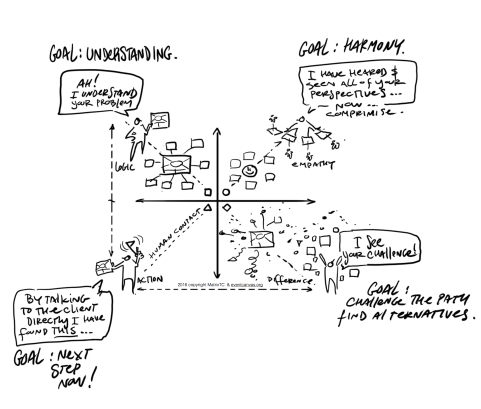Explore the LEAD preferences below
Logical | Empathy | Action | Difference

LOGICAL
People with LOGICAL as a primary LEAD preference will typically demonstrate behavioural restraint; self-control and self-discipline; will prefer planned and organised actions, rather than spontaneous or unexpected events in their lives; are methodical and systematic in their work; take themselves seriously and favour projecting a formal, professional image to others; and prefer workplaces that give them routine, order, stability, and structure.
They can occasionally be quick to judge the behaviour of others and often find it difficult to appreciate opinions or practices that contradict their own orderly approach towards thinking, working, and being. They can also sometimes act dismissively towards people who subjectively generalise, are reckless, or seem overly emotional. Their preference for analysis, rigour, and planning highlights their need for people to maintain a calm professional detachment when influencing them, and for others to provide them with clear communication and structured solutions.
EMPATHY
People with EMPATHY as a primary LEAD preference will typically work hard to create and maintain harmonious relationships using considerate, caring, and kind behaviours; are usually genuinely concerned for the welfare and wellbeing of others; tend to have an optimistic and trusting view towards people in general; and prefer workplaces that are collegial, friendly, inclusive, co-operative, and sensitive towards the needs of others.
They prefer environments where respect, trust and shared values exist and can become upset, withdrawn or stubborn if their offers of help are rejected, their sensitivities are ridiculed, or their trust is broken. They’ll avoid confrontation because of its potential for damaging relationships and will often ignore the unacceptable behaviour of others in order to maintain peace and harmony. When being influenced they prefer people to be sensitive to the needs of others; and provide inclusive solutions that seek to reduce animosity or uncertainty.
ACTION
People with ACTION as a primary LEAD preference are excitable, talkative, gregarious, positive, and extraverted; often have a large circle of acquaintances; and tend to adopt a task-focused approach towards work and problem solving. They can be quite socially confident, charming, persuasive, and pragmatic; and typically prefer working in predictable structure or environments that give them a sense of place, position, purpose, or power.
Their need for recognition and praise, social interaction and excitement coupled with their enthusiastic and often no-nonsense approach towards clearing obstacles to achieve their goals can often be misinterpreted as arrogance, ‘showing off’, bullying, or aggression. When being influenced, they desire an emphasis on the speed, simplicity, and results that will be delivered because, to them, ‘actions’ speak louder than words! They prefer positive communication that are focussed on tasks or outcomes, and simple solutions that are free from ambiguity.
DIFFERENCE
People with DIFFERENCE as a primary LEAD preference are imaginative and interested in new, novel, or unusual ideas and future possibilities. Their often disorganised, unhurried approach towards work can be confusing, annoying, funny, or distracting to people, especially if they ‘bounce’ from one random idea to the next, or when they antagonistically challenge restrictive practices or people with inflexible views or controlling behaviours.
They usually have lots of creative ideas and like to spend time thinking or talking about starting lots of various projects. Because they are easily distracted, they can frequently abandon a plan for one that seems to be more interesting or different. When being influenced, they want people to be as tolerant of ambiguity, relaxed, intellectually creative, curious, challenging, liberal, and open-minded as they are, and prefer people to talk about potential and future options, rather than restrictive or rigid single-approach solutions or ideas.


